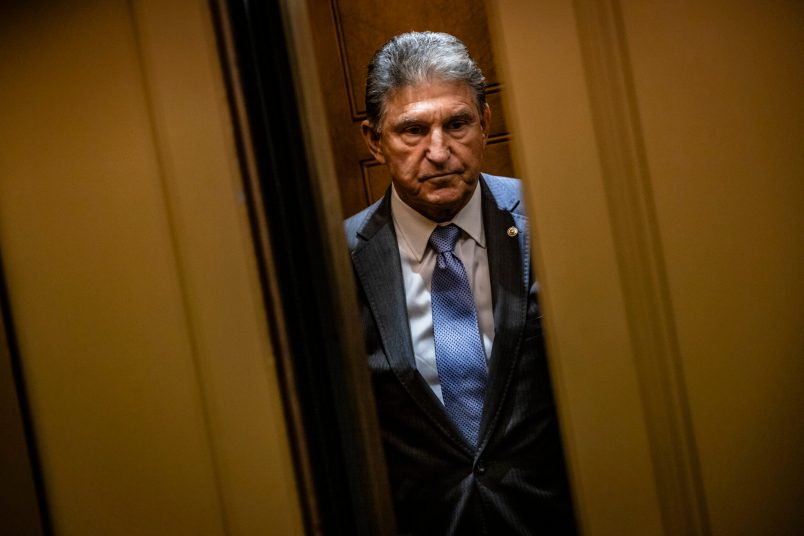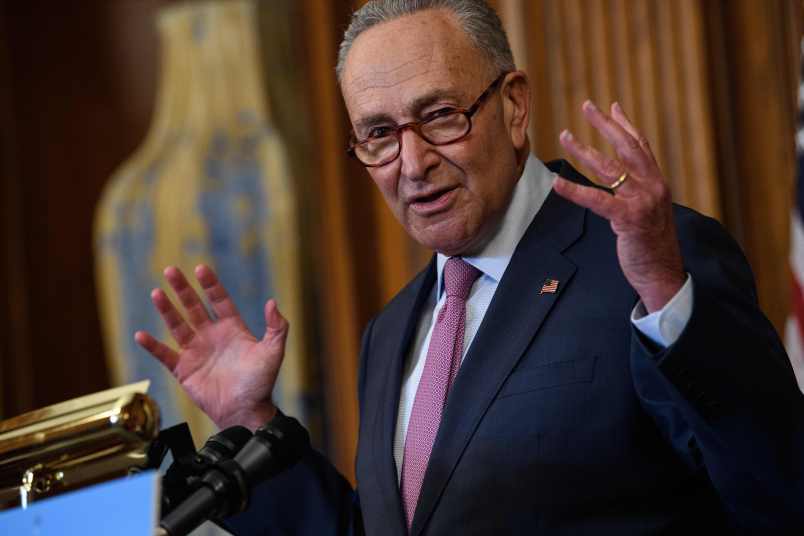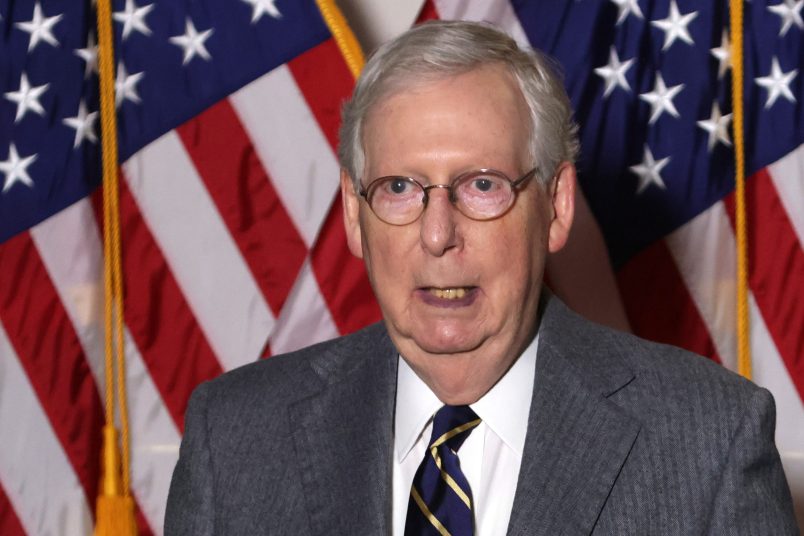The special election to fill the Georgia congressional seat vacated by Health and Human Services Secretary Tom Price has garnered intense national scrutiny and record spending in just a few months, and the top two candidates will finally face off in Tuesday’s runoff.
The race in Georgia’s Sixth Congressional District is seen as Democrats’ final chance to sweep a House seat away from Republicans and create a tailwind going into the 2018 midterms. But while the outcome of the race could determine in part the momentum the Democratic party has going forward, experts say the result will not necessarily serve as a good predictor for the midterms.
National observers also view the race as a referendum on President Donald Trump, with Democrats hoping that anti-Trump energy in Georgia will propel their candidate, Jon Ossoff, to victory and prove how much of a liability the deeply unpopular President can be to the Republican Party.
With such high stakes, the race has attracted about $50 million in spending, bombarding residents of the sixth district with wall-to-wall political ads. Local stations actually added news programs to help accommodate the flood of ads.
Ossoff has seen a small lead over Republican Karen Handel in some of the latest polls of the race, but surveys of sixth district voters have shown a very tight race throughout. A poll released by local TV station WSB on the eve of the election showed the two candidates literally neck-and-neck, with Ossoff leading Handel by a tenth of a percentage point among likely voters.
Here are six things to watch out for as results roll in Tuesday night:
Turnout
Marc Rountree, the president of Landmark Communications, a Republican consulting and polling firm, told TPM that Ossoff should benefit if turnout on Tuesday is similar to turnout in the jungle primary or otherwise very high, while somewhat high turnout could help Handel.
Typically, high turnout is a good sign for Democratic candidates. But as Georgians head to the polls, the sheer number of voters casting ballots will not necessarily help predict the winner, according to Kyle Kondik, an expert on congressional elections with the University of Virginia.
“It’s possible that high turnout could actually benefit Republicans,” Kondik said.
Kondik added that the race is hard to predict since it’s possible that voters who don’t come out to the polls regularly are participating in this race.
In the initial round of voting that sent Ossoff and Handel to the runoff, more than 190,000 people voted total, with 57,000 of them voting early. More than 140,000 people voted early for this runoff election, but it remains to be seen whether the early vote signals a higher turnout is likely for in-person voting Tuesday.
How many Republicans break for Ossoff
Though the demographics in Georgia’s sixth district appear to be shifting to benefit Democrats, Ossoff will still need a significant number of Republican voters to cast a ballot for him in order to win the race.
The district is historically a Republican stronghold, and Price handily won re-election there in 2016 before vacating the seat. But the demographics in the district have been shifting in a way that could benefit Democrats. In 1992, 90 percent of residents in the district were white, while today 70 percent of residents there are white, per Politico.
Still, Kondik estimated that Ossoff will need about 20 percent of Republicans to vote for him in order to secure the House seat. Ossoff is well aware of this: though he launched his campaign in an anti-Trump spirit, lately he has been pitching himself as a moderate willing to work with both parties in Congress in an attempt to appeal to Republicans in the district.
It will be hard to determine just how many Republicans ultimately voted for Ossoff, however. Georgia does not require voters to register with a party and allows residents to vote in the party primary of their choice, making it difficult to pinpoint how many voters are Republicans. Analysts must rely on voters’ past primary voting patterns to determine their party affiliation.
How record-shattering spending levels impact the result
Though much has been made of the special election’s national implications, one aspect of the race is truly singular: its record spending. The candidates and outside groups together have spent about $50 million on the race, the most ever spent on a U.S. House race.
Ossoff has raised at least $23 million for his own campaign, while Handel has benefitted from major spending from outside groups like the Congressional Leadership Fund. Yet experts say the amount of money and attention the race has attracted isn’t likely to be replicated in future elections, making the Georgia special election a poor indicator for future races.
Rountree told TPM that spending in the election has “gotten so out of hand” that he believes the race “doesn’t say anything about the 2018 election anymore.” Candidates in the district will not be able to replicate that level of spending over and over again, he said.
Kondik said that he was unsure of the exact impact the record spending has had on the sixth district race, but he did note that attention and funds will be more spread out in future elections.
“The level of interest is just going to be different and more dispersed in 2018,” he said.
What role the congressional baseball shooting plays
There’s a chance that Tuesday’s results could be impacted by last week’s tragic shooting at a congressional Republicans’ baseball practice, which left several people injured, including House Majority Whip Steve Scalise.
A poll released Monday evening by WSB-TV and conducted by Landmark Communications indicates that the shooting could motivate Republicans to head to the polls. The survey found 46 percent of Republicans said that the shooting and a suspicious package sent to Handel’s house last week would make them more likely to vote on Tuesday. Just 24.7 percent of Democrats polled said the events last week would make them more likely to head to the polls.
Rountree, whose firm conducted the poll, told TPM that the survey indicates the shooting could be a “major factor” for Handel.
“These stories have resonated with Republican primary voters,” he said.
Indeed, some Republicans have sought to use the shooting to Handel’s benefit in the race’s final days. The conservative Principled PAC tried to link Ossoff to the shooting in a TV ad, which both Ossoff and Handel denounced, while the Republican Party chair in a neighboring Georgia district predicted that the “shooting is going to win this election” for the GOP.
What the margin of victory says about Democrats’ momentum
This special election has prompted intense national scrutiny, with Democrats pinning virtually all their hopes on Georgia’s sixth district to be the first of many red or purple districts they want to swing blue.
Trey Hood, a political science professor at the University of Georgia, said that if Ossoff loses, no matter the margin, it won’t be good for Democrats.
“If Ossoff comes close, but he loses, I don’t think it’ll matter,” Hood told TPM.
Kondik, however, argued that if Ossoff loses but still performs better than Hillary Clinton did in the district it’ll show that Democrats will be able to build on Clinton’s numbers from the 2016 election going forward.
Obviously, it’s a good sign for Democrats going forward if Ossoff wins. At the very least, Kondik said, Ossoff winning the race will bring Democrats one seat closer to winning back a majority in the 2018 election.
“If he wins, I think it’s possible that it could further energize Democrats in Georgia,” Hood told TPM.
Yet Kondik, Hood and Rountree all warned against using the Georgia special election as a predictor for the 2018 midterms.
“Just because the conditions suggest one thing now, doesn’t mean the conditions will be the same in 2018,” Kondik told TPM. But he added that if Trump’s approval rating remains the same, an Ossoff win could suggest that Republicans will have a poor showing in 2018.
What the results say about how far left Georgia’s sixth has swung
If Ossoff ekes out a win, the special election may prove that Georgia’s sixth district has shifted from red to purple.
Kondik argued that the mere fact that the special election is so close shows that it is now a swing district.
“I think Ossoff’s basically already proven that this district is competitive,” he told TPM.
Hood also noted that he is seeing “shifting demographics” in the district that show it becoming more favorable to Democrats, but he added that he does not think that demographic shift alone accounted for Trump’s poor showing there in 2016.
TPM composite by Christine Frapech











Key Thing number 7, evidence of Republican theft that will likely go unanswered by Democrats.
Handel: 52.9%
Ossoff: 47.1%
Youth turnout for Dems will come in below expectations.
For those who care about the correct use of the word “literally”, the candidates are hopefully not “literally neck-and-neck.”
From the Guardian
"As the US representative Doug Collins put it at Handel’s final campaign event: “The last thing we need in Washington is another Democrat from California, especially coming from Georgia.”
You don’t see Democratic congressman going into districts to campaign for a candidate trashing the values of the district and state.
The congressman ought to look at his district compared to others, particularly in California before he mouths off.
They’ve forced the GOP to waste resources in a district that should be considered safe, which is a sign of things to come. Heck, the fact they had to use this much money to combat a greenhorn candidate shows how far the GOP has fallen